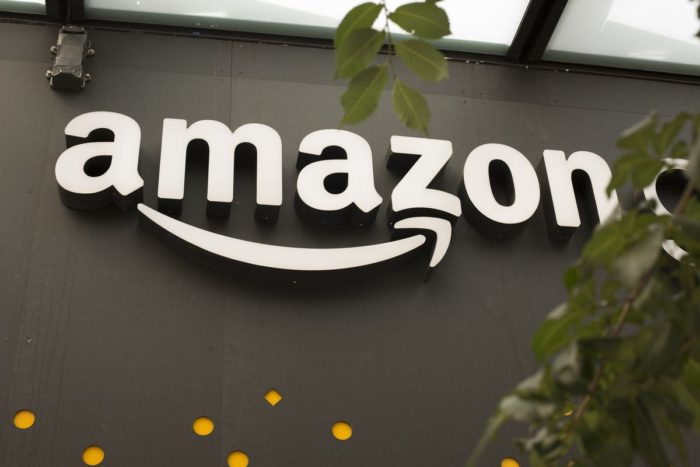
Amazon is brilliant. Everyone knows that. You don’t build a company on track to becoming a trillion dollar company without being brilliant. Here’s one way Amazon is brilliant that is astounding.
For eCommerce merchants, this is an important thing that Amazon does that needs to be paid attention to. Knowing this is a strategy that is baked into the Amazon business model, you can adjust your strategies as a merchant that has to partner and compete with this giant at the same time.
Amazon makes money on products, even when they lose money on it. For example, they may buy a pack of iPhone charging cables for $5 a piece, then sell it for $4. They lose a $1 on that transaction. But do they?
Here’s how they make money on a deal like this. Believe it or not, they actually repeat this type of deal every day, thousands of times over. Why would they keep allowing this to happen?
With transactions like these, there are two main things that is to Amazon’s benefit. One is more important to them than the other. The first is the advantage that is less important to them.
Edges Out Competition
What Amazon has done to big box and small retailers the world over, they are doing at a micro level with individual products. They are essentially responsible for all the big chain retailers like Sears, Toys R Us and JC Penny going out of business.
They did it through lower prices. It began to be commonly known that most things you can get at these retailers, you can find on Amazon for cheaper.
In fact, a phenomenon known as show-rooming was creating by Amazon. Essentially, consumers will go to the mall or other retail outlet to try on, test, check out, see first hand, a product they are interested in buying.
If they want to buy that product, instead of buying it at the store they are in, they will go to their Amazon app and order it instead.
That is now happening at a micro level with individual products online. If Amazon is selling a pair of sunglasses for $50, would you pay another online retailer $60 for the same pair? Of course not.
The question is, how is Amazon ultimately making money, even if they are edging out their competition through low prices if it costs them more to procure the product than to sell it?
Amazon Cash Flow
The answer lies is Amazon’s cash flow strategy. They basically negotiate with their supplies to pay them as far into the future as possible. Then they sell the products as fast as possible, even if it means lowering it past below cost.
Then they will posses that cash from the time they sell the product to the time they have to pay the supplier. They reinvest that cash for a return. They may even park it at a bank to collect interest. Either way, they make money from the cash while they have it in hand.
Let’s break it down to a simpler, more digestive scenario.
Amazon will procure a shipping container full of 50 inch TV’s for $500 each. They negotiate with the supplier to not pay them for 9 months. Let’s say there are 10,000 units in the shipment for a total order of $5 million ($500 X 10,000).
Why would a supplier agree to such horrible payment terms? Because Amazon buys in such high volumes that the supplier can’t afford not to work with them. Amazon has the leverage because they buy in such large quantities.
For a small or medium sized business, working or not working with Amazon and their draconian payment terms might be the difference between being able to recognize $5 million or not on their income statements for the year. Even if it takes them forever to get paid, they still want the revenue even if they won’t see that cash for 9 months.
Amazon then will turn around and sell those TV’s for $450, $50 less than what they paid for it. But because the price was so low, consumers scramble to take advantage of this great deal and the entire shipment is sold within a week.
Now, Amazon has $4.5 million in cash in the bank. Yes, they lost $500,000 thus far on this deal. But they now have $4.5 million in cash that they did not have a week ago. And they get to keep and use that $4.5 million for the next 9 months.
They will reinvest that cash over the next 9 months. To keep it simple, let’s say they use the cash and it ultimately yields a 20 percent return on investment. That means they made $900,000 on the $4.5 million. They net $400,000 on this entire deal.
That’s how they make money even when they lose money on their products.
eCommerce Merchants
So how can the common eCommerce merchant compete when Amazon is engaging in such practices? Well, the answer is that Amazon doesn’t do this on all of their products. When and how they use this tactic depends on the product. You can know the sales number of a product on Amazon by an amazing tool named Jungle Scout. Good news for you is that we have The Best Jungle Scout Discount Available – 30% OFF. Check it out now.
Most enterprise Amazon merchant platforms like Magento can provide the data you need to work around this tactic and not become a casualty. A Magento Enterprise alternative like Shopify Plus or Big Commerce will also provide insights so you don’t pick the wrong products to compete with.
Merchants who figure out how and why Amazon uses tactics will have an edge. Not only will they be able to work with Amazon better as a seller, but will be better prepared to take on other competitors in their space.






